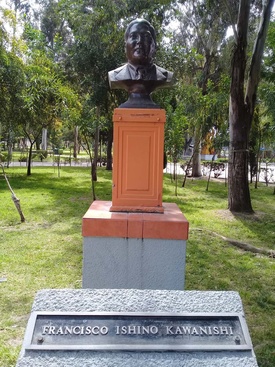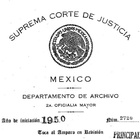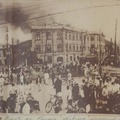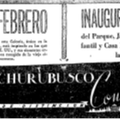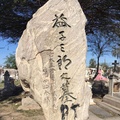Presentation
In Latin America, it is a field of study that has been little analyzed as to how Asian migrants, particularly Japanese, faced - at different times - various vicissitudes before criminal justice. Existing studies have given priority to the analysis of the adaptation of new migrants to the rules of society and their ability to improve through hard work, honesty and a great sense of honor.
However, the above loses sight of the fact that during their residence and daily life they could be the object or subject of criminal acts in criminal, administrative or civil matters. That is, situations that could happen to any inhabitant in a small or large Latin American city regardless of their place of origin.
The above were the elements that motivated this investigation for the case of Mexico. The first problem faced was the lack of criminal incidents involving a Japanese resident. However, some cases were identified but they did not exceed more than twenty in a period of almost one hundred years. Among this delimitation, those of criminal/criminal matters that will involve serious crimes were even smaller, with the majority pertaining to situations such as abuse of trust, fines, taxes, or violations of the naturalization law. It was also noted that the vast majority ended up in the Supreme Court of Justice of the Nation (SCJN) and the revocation of the sentence given by a previous judicial instance.
The fact should not be ruled out, whether in civil, criminal, or administrative matters, of the existence of other cases where a first-generation Japanese migrant has been prosecuted and given a sentence and this has been carried out. But to find them, individual consultations would have to be made in the Superior Courts of Justice (TSJ) of each of the States of the Mexican Republic. Therefore, it was decided to search for the files that arrived at the SCJN, requesting an appeal for protection and were consulted through the SCJN file search system. The research method was as follows: the search was limited to the years 1910-2000; Preference was given to cases involving criminal matters. 1 The cases of Japanese residents who came to the SCJN were generally amparos in different modalities, which are motions filed by complainants to appeal the sentence handed down by a certain state Supreme Court, or a district criminal judge. 2 From this universe, four cases were selected that involved residents from Japan and this series will narrate the events according to the judicial file.
Francisco Ishino Kawanishi and the Smuggling Accusation
Francisco Ishino Kawanishi entered Mexico in 1923 and was a highly respected merchant in Baja California. Ishino was accused of the alleged crime of smuggling gunny bags in 1933. The sentence was handed down in a murky manner by the local authorities, without first having fully proven his guilt. Therefore, once he arrived at the SCJN, through the defense and advice of Mr. Hermenegildo García, he obtained protection and absolved Ishino of all crimes.
Indeed, Ishino was born in 1908 in Shizuoka, Japan. He was a naturalized Mexican and it is known that by 1931 he was single, 23 years old and had already been living in Mexico for at least more than two years. A merchant by trade, he was - at his young age - the owner of the “Rancho de los Japoneses” where he employed several compatriots and was the owner of the “El Edén” miscellany in Tijuana. 3
Manuel Hernández, a neighbor of Ishino, filed a complaint for smuggling on June 16, 1931 at the Tijuana border customs office. The next day, supported by the public ministry and in the presence of the plaintiff, customs agents searched the “Rancho de los Japoneses.” In that town, customs authorities found 412 bags of jute, which Ishino was able to verify their legality through an import ticket issued by the same customs some time ago.
Not satisfied, Hernández asked that the possible existence of jute bags be also searched in a mountain surrounding the “Misión Vieja” ranch – kilometers away from the aforementioned Ishino ranch –, where customs agents found multiple jute bags “hidden” among the matizes and rocks whose total weight was 2,019 kilos. Ishino denied having brought those products into Mexico, but Manuel Hernández assured that he had hidden said bags together with Oscar Kawanishi and Asakichi Nishita the day before, and that is why he asked the agents to check the area. This testimony was supported by the rest of the Hernández family, although with continuous contradictions.
Ishino's main defense was that he managed to prove that he was not in Mexico, but in San Ysidro, California, making purchases for his store “El Edén”, at the time in which the Hernández family declared that he was “hiding” the bags of jute in the bush. Also, during the trial, the 2,029 kilos of jute were reweighed, and it was shown in court that these were only 1,750 kilos. Despite the irregularity of the claim and the facts, the first district judge in the Territory of Baja California, handed down a sentence of two years and two months in prison on October 6, 1931 against Ishino based on the testimonies of the Hernández family. . Francisco Ishino appealed that decision and his case was transferred to the Fourth Circuit Court of Jalisco, the same body that, ignoring the irregularities, endorsed the ruling of the Baja California court on January 3, 1932.
The bags hidden in the bush had the peculiarity of being the same as those legally possessed by Ishino. Therefore, the above also served the Mexican court to sentence him. However, the Japanese argued that months ago his warehouses in San Ysidro – which contained large quantities of jute – had been robbed; a fact that he managed to corroborate with the testimony of Deputy Sheriff, Jay Swinehart, and by the testimony of Californian businessman JW Miller. Therefore, even though the bags found in the bushes were originally the property of Ishino, neither he nor his Japanese employees were responsible for illegally bringing them into Mexico. Ishino took his appeal to the SCJN, where he was granted protection and revocation of the sentence on October 4, 1934, due to the multiple irregularities in the process and the dubious testimonies of the plaintiffs.
Francisco Ishino, after achieving verification of his innocence, continued with his activities as a businessman, he was an exemplary citizen and in recognition of his contribution to Tijuana, he deserved to be in the roundabout of illustrious men of that border city.
Grades:
1. The hundred most common Japanese surnames were manually searched according to a list published by The Japan Times in 2009. For some Japanese names that were spatially difficult to transliterate into Spanish, writing alternatives more suitable to the Mexican ear were also used. era, although due to the multiple variations that a single surname can have there was no greater success. Editorial, “ Japan's top 100 most common family names ”, [online], The Japan Times, Japan, October 11, 2009. [accessed: 05/09/2018]
2. Each incident that fit what was sought was consulted, making a final selection of four cases accompanied by their respective public file; which is characterized by having “censored” the names and addresses of those involved. Given this, the basic information of each case was extracted in person from the Archive, and the public file served as a reference point for the details of the legal issues.
3. The order of their surnames varies. The SCJN file refers to him as “Francisco K. Ishino”, but most of the surrounding historical information refers to him as Francisco Ishino Kawanishi.
© 2019 Carlos Uscanga, Rogelio Vargas



